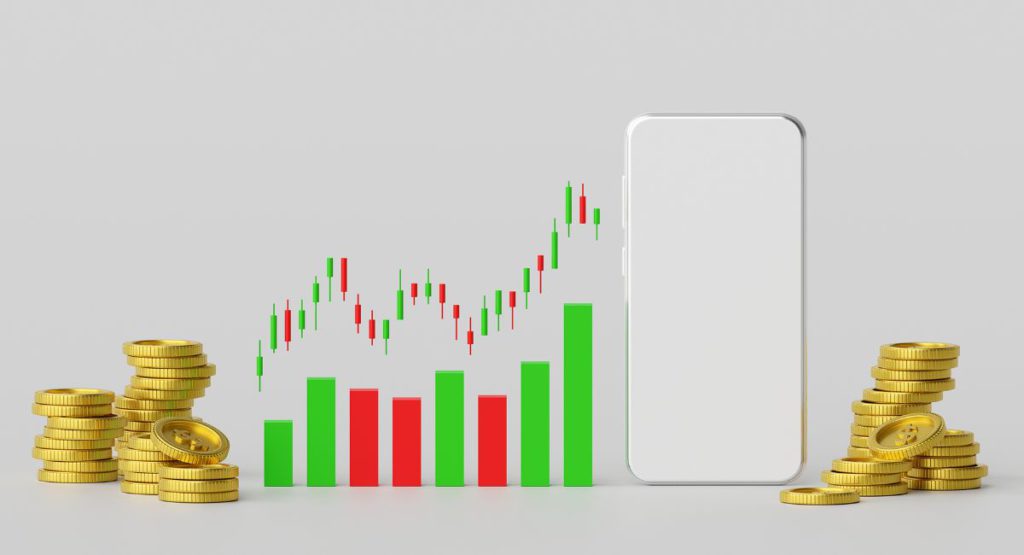Your Ultimate Guide to Understanding Crypto Market Manipulation

In the ever-evolving landscape of cryptocurrency trading, understanding crypto market manipulation is crucial for any investor seeking success. This comprehensive guide will delve into the intricacies of market manipulation in the crypto sphere, empowering you with the knowledge to navigate the markets confidently.
What is Market Manipulation?

Market manipulation refers to deliberate actions taken to artificially inflate or deflate the price of a cryptocurrency for personal gain. Traders and investors should be vigilant, as these practices can significantly impact market dynamics.
Pump and Dump Schemes: Explore the notorious world of pump and dump schemes, where coordinated efforts are made to inflate the value of a cryptocurrency, only to sell off at its peak. Learn how to identify the signs and protect your investments.
Spoofing and Wash Trading: Unravel the complexities of spoofing and wash trading, deceptive tactics employed to create a false sense of demand or supply. Discover how to spot these manipulative techniques and shield yourself from their effects.
Social Media Influence: The power of social media in shaping market sentiment cannot be understated. Delve into the role of influencers, coordinated campaigns, and fake news in swaying cryptocurrency prices. Learn to separate genuine information from manipulation.
Insider Trading: Examine the ethical and legal implications of insider trading within the cryptocurrency space. Understand how privileged information can be exploited for personal gain and the potential consequences for those involved.
Pump Groups and Telegram Channels: Join the discussion on the rise of pump groups and Telegram channels that facilitate coordinated efforts to manipulate specific cryptocurrencies. Gain insights into their tactics and how to avoid falling victim to their schemes.
Regulatory Landscape: Explore the current regulatory environment surrounding market manipulation in cryptocurrency. Understand the challenges regulators face and the measures being taken to curb fraudulent activities.
Also, read – What Should Investors Do About Institutional Adoption Causing Crypto Market Boom?
Is manipulating cryptocurrency legal?

The legality of manipulating cryptocurrency varies across jurisdictions, and the regulatory landscape is still evolving. It’s crucial to recognize that while some activities may be legal in certain regions, they could be deemed illegal in others. Here’s a detailed exploration of the legality of manipulating cryptocurrency:
- Lack of Clear Regulation: Cryptocurrency markets operate in a relatively nascent and decentralized environment. Governments and regulatory bodies worldwide are grappling with how to categorize and regulate these digital assets. As a result, the lack of clear regulatory frameworks makes it challenging to definitively label certain actions as legal or illegal.
- Market Manipulation Laws: Traditional financial markets have established laws and regulations against market manipulation to ensure fair and transparent trading. However, the same level of regulatory clarity is often lacking in the cryptocurrency space. Some countries have begun to introduce or adapt existing securities laws to cover digital assets, but the enforcement of these laws is not uniform globally.
- Pump and Dump Schemes: Activities such as pump and dump schemes, where the value of a cryptocurrency is artificially inflated and then rapidly sold off, are generally considered fraudulent and illegal in traditional financial markets. Some jurisdictions are extending these regulations to cover cryptocurrency markets, while others are yet to explicitly address such practices.
- Spoofing and Wash Trading: Deceptive practices like spoofing and wash trading, where false signals of buying or selling are created to manipulate the market, are also frowned upon in traditional finance. Cryptocurrency exchanges are increasingly implementing surveillance mechanisms to detect and prevent such activities, but the legal consequences may vary.
- Insider Trading: Insider trading, the act of using non-public information to trade and gain an unfair advantage, is illegal in many traditional financial markets. The same principles apply to cryptocurrency markets. However, the challenge lies in enforcing such regulations, given the decentralized and pseudonymous nature of many cryptocurrencies.
- Regulatory Actions: Regulatory bodies in some countries have taken steps to combat market manipulation in cryptocurrency. Enforcement actions, fines, and legal proceedings have been initiated against individuals and entities engaged in fraudulent activities. However, the global nature of cryptocurrencies makes it challenging to create a unified regulatory approach.
- Global Variances: Cryptocurrency regulations vary widely from country to country. While some nations have embraced digital assets and crafted clear regulatory frameworks, others have taken a more cautious or restrictive approach. This lack of global consensus adds complexity to determining the legality of manipulating cryptocurrencies.
The legality of manipulating cryptocurrency depends on the specific actions taken and the regulatory environment in a given jurisdiction. Traders and investors should stay informed about the evolving legal landscape and comply with the regulations applicable to their activities. As the cryptocurrency market matures, it is likely that more comprehensive and standardized regulations will emerge to address market manipulation concerns.
📚Crypto 101📚
♦️What is market manipulation in cryptocurrency?♦️⏺️ Cryptocurrency market manipulation involves deliberately using deceptive tactics to artificially influence cryptocurrency prices. Indicators of manipulation include abrupt price changes unrelated to news or…
— Chuong Pham 𝕏 (@chuong_n_pham) December 2, 2023
Vulnerabilities and manipulation risks in decentralized exchanges

Decentralized exchanges (DEXs) offer a peer-to-peer trading environment without the need for intermediaries, providing users with greater control over their funds. However, like any technology, decentralized exchanges are not immune to vulnerabilities and manipulation risks. Here’s a detailed exploration of some key concerns:
- Smart Contract Vulnerabilities:
- Code Exploits: DEXs operate on smart contracts, and vulnerabilities in these contracts can be exploited. Smart contract bugs, coding errors, or vulnerabilities may allow malicious actors to manipulate the system for their gain.
- Flash Loans: Smart contract vulnerabilities can be exploited through the use of flash loans, where large amounts of cryptocurrency are borrowed temporarily to manipulate prices. Once the manipulation is successful, the borrowed funds are repaid.
- Front Running and Order Manipulation:
- Front Running: This occurs when a trader exploits advance knowledge of another user’s transaction. Malicious actors can place their trades ahead of others to profit from anticipated market movements, potentially causing losses for the affected trader.
- Order Book Manipulation: In a DEX, attackers can use various techniques to manipulate the order book, such as placing large orders to create a false sense of market demand or executing trades in a way that disrupts the natural price discovery process.
- Liquidity Pool Exploits:
- Impermanent Loss: Liquidity providers in decentralized exchanges may face impermanent loss, a situation where the value of assets in the liquidity pool diverges from the value of the same assets held individually. Malicious actors may exploit impermanent loss to drain value from liquidity pools.
- Manipulation of Automated Market Makers (AMMs): DEXs often use AMMs, which set token prices based on the ratio of assets in a liquidity pool. Manipulating these ratios can impact token prices, leading to potential gains for attackers.
- Oracle Manipulation:
- Price Feed Exploits: Many decentralized exchanges rely on oracles to provide external price data. Manipulating or compromising these oracles can lead to incorrect pricing information, affecting trades and causing financial losses for users.
- Sybil Attacks and Governance Manipulation:
- Sybil Attacks: In decentralized systems, a Sybil attack involves creating a large number of fake identities to control a substantial portion of the network. This can be exploited to manipulate voting mechanisms and governance decisions.
- Governance Centralization: Some DEXs claim to be decentralized in operation but may have centralized governance structures. If a few entities have significant control, they could manipulate decision-making processes to their advantage.
- Regulatory and Compliance Risks:
- Anonymity and AML Concerns: The pseudonymous nature of many decentralized exchanges can make it challenging to enforce anti-money laundering (AML) regulations. This can attract illicit activities, including market manipulation.
- Cross-Chain Vulnerabilities:
- Interoperability Risks: DEXs operating across multiple blockchains face challenges related to interoperability. Cross-chain transactions may introduce vulnerabilities, and malicious actors can exploit weaknesses in one blockchain to impact another.
To mitigate these vulnerabilities and manipulation risks, ongoing security audits, rigorous testing, and the development of decentralized governance models are essential. Users should also exercise caution, stay informed about potential risks, and adopt best practices for securing their assets when engaging with decentralized exchanges.
Impact of wash trading on crypto market manipulation

Wash trading is a form of market manipulation where an investor simultaneously sells and buys the same financial instrument to create misleading or artificial activity in the market. In the context of the cryptocurrency market, wash trading can have several significant impacts on market manipulation. Here’s a detailed exploration:
- False Trading Volume:
- Inflated Liquidity Metrics: Wash trading artificially inflates trading volume, making a cryptocurrency appear more liquid than it actually is. This can mislead traders and investors who rely on volume metrics to make decisions.
- Exchanges Rankings: Cryptocurrency exchanges often use trading volume as a key metric for ranking the popularity and reliability of listed assets. Wash trading can lead to inaccurate exchange rankings, affecting user trust and decision-making.
- Price Manipulation:
- False Indicators: Wash trading creates false indicators of market activity, potentially influencing the perceived supply and demand for a cryptocurrency. Traders relying on technical analysis or other market indicators may make decisions based on inaccurate data.
- Artificial Price Movements: By executing trades without genuine buying or selling interest, wash trading can create artificial price movements. This can lead to price distortions and impact the overall market sentiment.
- Market Perception and Reputation:
- Investor Confidence: Wash trading undermines investor confidence in the integrity of the cryptocurrency market. Traders may become skeptical about the legitimacy of price movements and question the reliability of market data.
- Negative Publicity: Exchanges associated with wash trading practices may face negative publicity, damaging their reputation in the broader financial community. This can lead to decreased user trust and a potential decline in trading activity.
- Regulatory Scrutiny:
- Increased Regulation: Wash trading is considered a form of market manipulation, and regulatory authorities are increasingly scrutinizing cryptocurrency markets. Exchanges engaged in or facilitating wash trading may face regulatory action, including fines and legal consequences.
- Market Surveillance: Regulatory bodies are implementing more robust market surveillance measures to detect and prevent wash trading. Exchanges are expected to implement tools and protocols to identify and eliminate manipulative trading practices.
- Efficiency and Market Functionality:
- Distorted Market Signals: Wash trading introduces noise into the market, making it harder for genuine price discovery and market signals to occur. This can hinder the efficient functioning of the market and impact its overall effectiveness.
- Inefficient Allocation of Resources: Resources may be misallocated as a result of distorted market signals. Traders and investors may make decisions based on false information, leading to inefficient allocation of capital within the market.
- Long-Term Impact on Adoption:
- Deterrence of Institutional Participation: Wash trading practices may deter institutional investors from entering the cryptocurrency market. Institutional players often prioritize markets with transparent and fair trading practices, and the presence of manipulation may hinder broader adoption.
To counter the impact of wash trading, exchanges and regulatory bodies are implementing stricter surveillance measures, enhancing transparency, and adopting technologies like blockchain analytics to identify and deter manipulative practices. Traders and investors should remain vigilant and prioritize platforms with robust measures against market manipulation.
Related posts
Editor's Choice
- Generative Art NFTs: Top 10 Amazing Reasons Its A Marriage Of Creativity And Code
- Mastering Fear In Crypto Trading: Top 10 Amazing Tips To know In 2024
- DTX Exchange Overcomes Bearish ETH Sentiment as Fantom (FTM) and PEPE Crash
- Demystifying Intriguing Total Market Cap: Your Guide to Crypto Common Terms In 2024
- Top 10 Intriguing Reasons Gaming Is Embracing Crypto and In-Game Assets But Not Ditching Everything Else
Hottest Blockchain News Daily
Get our latest posts and announcements in your inbox.
[cn-social-icon attr_class=”social-share-side”]




























































